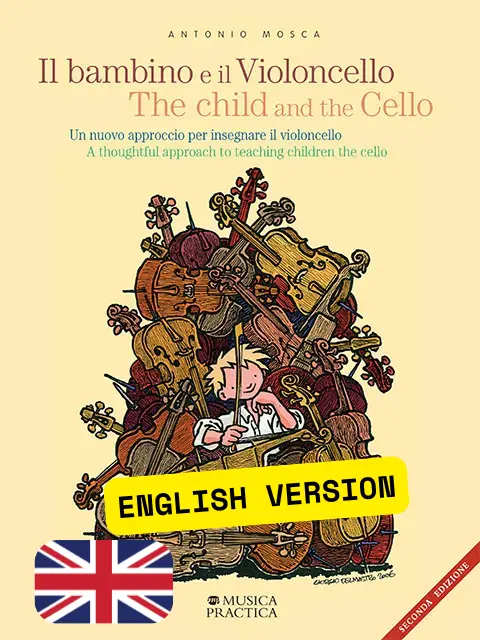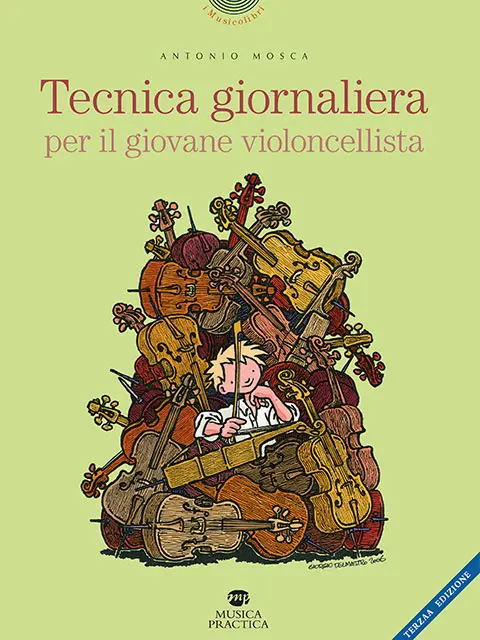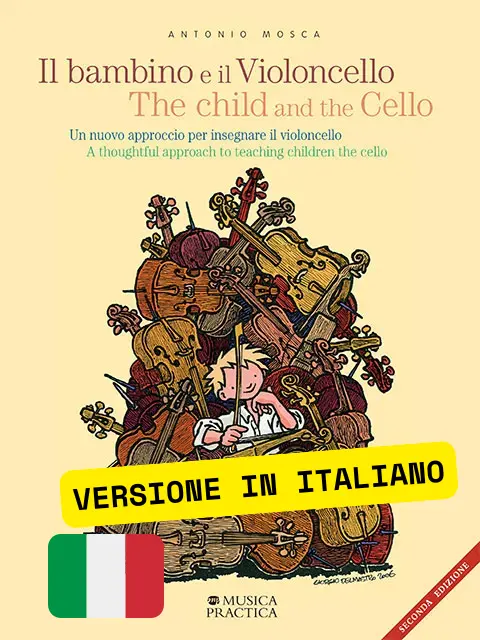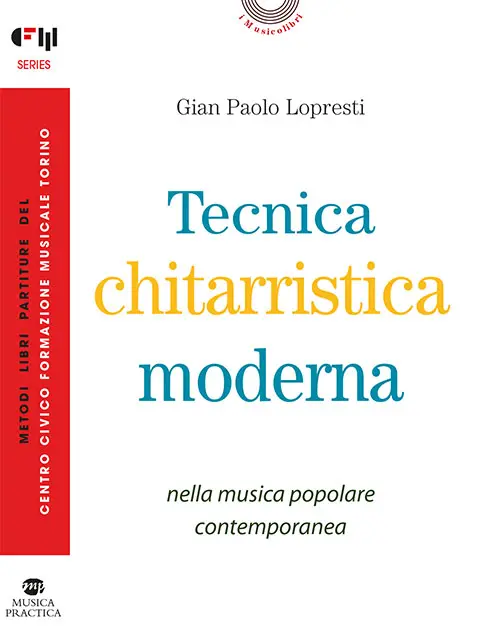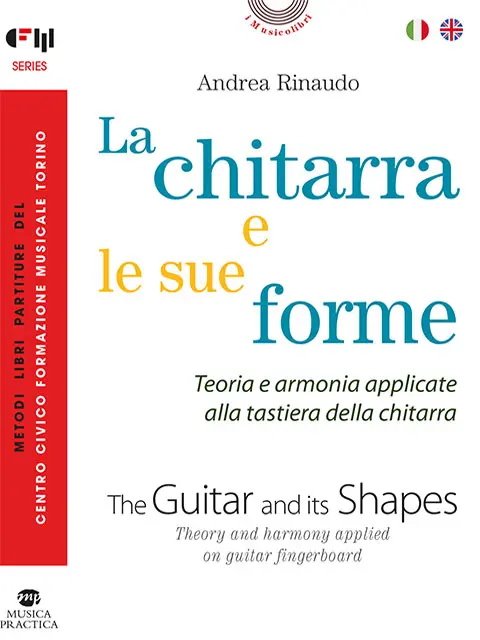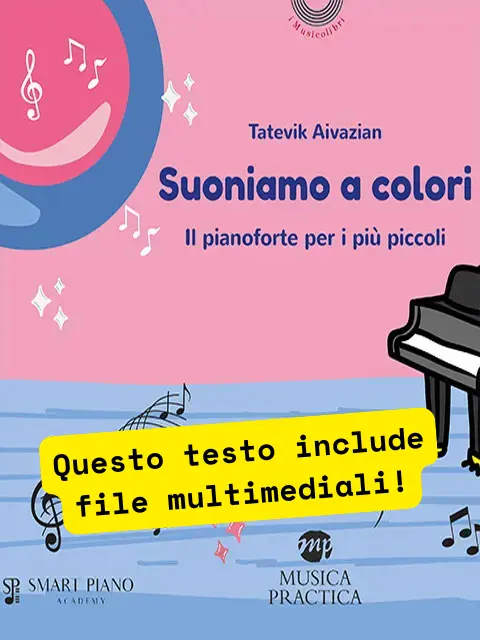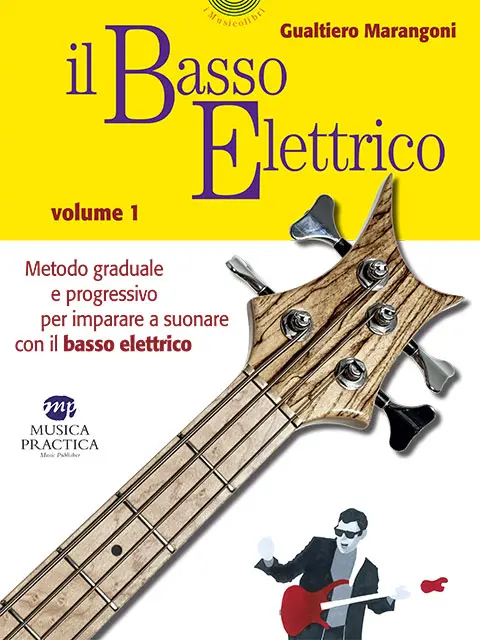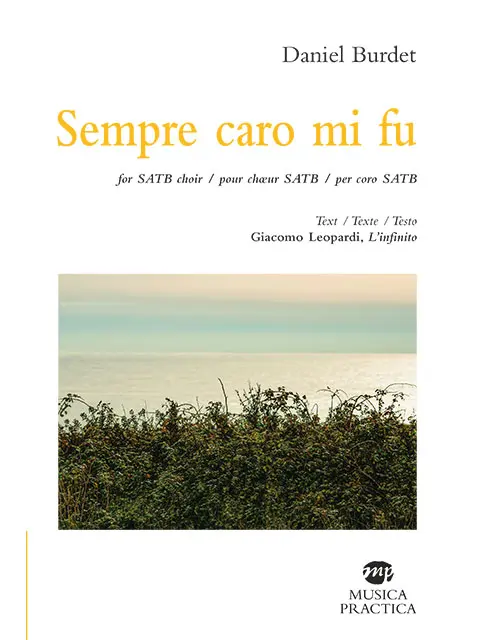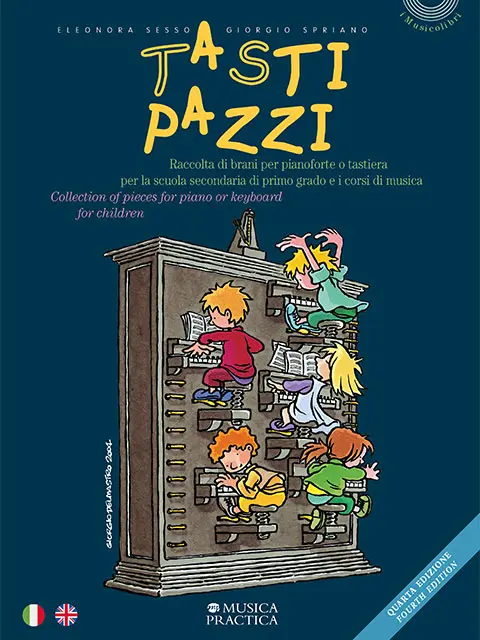Descrizione
I have written this book for cello teachers and particularly those who want to know more about teaching the instrument to children.It is also intended for parents, and will make it easier for them to help their children during daily practise. Teachers of other string instruments, such as the violin will, I think, find it particularly interesting.
I also hope to clear up some misconceptions about the Suzuki teaching method, wrongly considered to be superficial in its approach. Children that study with the Suzuki method are often considered “battery hens”. But a closer lookwill reveal the seriousness and excellence of its technical procedures.
The Suzuki Method is similar to many others: it demonstrates that children can learn music in the same way as they learn a language, when they are very young, and that thinking only talented children can study music is a misconception. It also demonstrates that all human beings can learn a musical instrument, and that music is an important, indeed essential, life resource.
Any teacher using this method will have to humble himself: the child he is to teach is not there to be dominated, but to be lead with great respect, in the way and in the time that suits him or her. The teacher will find, all things considered, that he has got more to learn than he ever imagined.
This book is the result of my many years of experience as a teacher and includes the technical knowledge handed down to us as students, by great players, such as Antonio Saldarelli, Giuseppe Selmi and Gaspar Cassadò. I firmly believe that, irrespective of the teaching method used, whether teachers are good or not depends on the love they put into their work. So, with this in mind, I have decided to put pen to paper and pass on my own experience in this field.
Indice
Prefazione / Preface3L’insegnante Suzuki / The Suzuki teacher4Altre indicazioni all’insegnante / The teacher must also…5I genitori / Parents6Primi esercizi – senza strumento, senza arco / The first exercises – without the cello and the bow7Attenti / Standing to attention7La parola d’ordine / Giving the password7La croce / The cross (a)7Lo spaventapasseri / The scarecrow7Gli orecchini / Earrings8Gli occhiali / Glasses8Il saluto del violoncellista / The cellist’s greeting8La falange scema / The silly joint8Con l’arco bacchettina e le figure geometriche / Exercises with geometric figures using a stick9Esercizi di concentrazione e controllo / Exercises for concentration and control10Gli anelli / The Rings10La bilancia (a) / The scales10La bilancia (b) / The scales10Gli occhi e l’arco / The eyes and the bow11Il cannocchiale / The telescope11Fare l’occhiolino, le corna e la lumachina / Winking, horns and snail tentacles11Il verme con l’arco / The worm and the bow12L’ora / The time12Il qua (avanti) – il la (indietro) / Here (forwards) – there (backwards)12Esercizi di coodinazione da farsi a comando in lezioni di gruppo / Coordination exercise to be used during group lessons13Posizione del carrettiere / The carter’s position13Il cavallo / The horse13Esercizi di coordinazione / Coordinations excercises13Il violoncello di compensato e la ginnastica / The plywood cello and gymnastics14Come deve essere la sedia / A suitable chair16Posizione dell’insegnante / The teacher’s position16Posizione del genitore / The parent’s position during the lesson16Le sedie della corretta posizione / Chairs for getting the right position17La sedia del palo / The pole chair17La sedia delle mezzelune / The half-moon chair18La sedia elettrica / The electric chair19Il basto / The yoke20Che violoncello usare in rapporto all’età / The right cello for each age21Il violoncello / The cello21Prima di suonare / Before playing22L’accordatura / Tuning22Lo strumento deve avere / The instrument must have22Come e dove mettere lo strumento dopo lo studio a casa / How and where to put the instrument after practise at home23Prima lezione con lo strumento vero / The first lesson with a real instrument24L’inchino / The bow at the beginning of the lesson24La parola d’ordine / Giving the password24Come si misura l’altezza dello strumento / Measuring the height of the instrument24Come ci si siede / How to sit down25Posizione dello strumento / The position of the instrument25Schiena diritta / Spine straight25Giochiamo un po’ / Let’s play around a bit26Collo e schiena diritte / Neck and spine straight26Posizione del violoncello al ginocchio / Position of the instrument at the knee26Il pino (1) / The fir tree (1)27Il pino (2) / The fir tree (2)27Raccogli l’arco / Pick up the bow27L’arco / The bow28L’arco e i segni colorati / The bow and the coloured marks on it28L’arco in giù (in la) – l’arco in su (in qua) / Downbow (here) – upbow (there)28La concentrazione / Concentration28È arrivata l’ora di suonare / Now let’s start playing the instrument29Il Re - il La (II Sol - II Do) / The D string and the A string (then the G string and the C string)29Ritmi basilari / Basic rhythms29Ritmi e parole / Rhythms and words29Impostazione dell’arco / Getting the right bow position30Primo modo / Way one30Secondo modo (le dita “al balcone”) / Way two (the fingers “on the balcony”)30Terzo modo / Third way30Quarto modo / Fourth way30Quinto modo / Fifth way31Sesto modo: Pan-da-e / Sesto modo: Pan-da-e31Esercizi di conduzione e tenuta dell’arco / Exercises for using and holding the bow32Il fiume e il barcone (ovvero l’arco) / The river and the longboat (the bow)32“La e Qua” / Bow here and there32Pagina dei giochi della corretta posizione / The right positions games33La moneta e i ritmi / A coin and rhythms33Ritmi e minestre (mistura di ritmi) / Rhythms and soups (mixed rhythms)34Gioco-esercizio di coordinazione: le corna, la lumachina e l’occhiolino / Exercise-game for coordination: horns, the snail and the wink34Diventiamo grandi / Growing up35L’impugnatura dei grandi / The grown up grip35Esercizi per consolidare l’impugnatura / Exercises for strengthening the grip on the bow36Il pic (ovvero il pollice dell’arco) / The “pic” (or the bow thumb)36Ciao ciao / Ciao ciao36Avanti tutta – l’arco è il problema! / Full ahead – the bow is the problem!37Il picchio / The woodpecker37L’uccelletto / The little bird37L’aereo / The aeroplane38Il fischio (esercizio del cambio di corda) / The whistle (exercise for changing string)38Se il pollice stringe troppo / If the thumb grips too much39Arco oltre il ponticello / The bow below the bridge39Il riposo del pollice / Relaxing the thumb39Il perché dell’arco barocco / Why we use a baroque bow40I polsi si guardano / Wrists facing each other40Il tergicristallo / The windscreen wiper40L’indice / The index40Il passaggio a livello (arco diritto) / The level crossing (bowing means)41Tira - Molla / Pull - Letting go41Senso dell’orizzontale / Getting to know when the bow is horizontal41Sopra le nuvole / Way above the clouds42Non andare in motocicletta / Don’t go on a motorbike42L’ottovolante / The roller-coaster42Sotto le nuvole / Down below the clouds43Per chi allunga in avanti l’indice: la matita / For those who stretch their index finger too much: the pencil43Per chi non muove l’avambraccio / For those who do not move their forearms43Per chi tira troppo veloce l’arco: l’arco in prigione / For those who draw the bow too fast: the bow in prison43Per studiare il balzato / Practising the “balzato”44Per chi non muove il polso / For those who do not move their wrists44L’arco détaché / Détaché bow strokes44La sberla / The slap44Se le falangi non si muovono / If the finger joints do not bend44Se uno suona troppo al tallone / When playing too near to the frog45Se uno suona troppo sulla tastiera (la U) / To stop children playing on the fingerboard (the U)45Per chi cammina con le dita sull’arco: l’elastico / For those whose fingers edge up the bow: the elastic band45Per chi non tiene il mignolo al suo posto: il cerotto con la “cuccia” / For those who do not keep the little finger in the right place: the corn plaster46Non chiudere il tunnel / Do not close the tunnel46Per chi non riesce a tirare l’arco diritto / For those who cannot keep their bow straight46Cosa c’è ancora sull’arco? / What else is there to say about the bow?47Ripartizione dell’arco / Bow distribution47L’ondulato “il buongiorno” / The “buongiorno” waves47Il buonasera / The buonasera47La pancia / The belly48L’anatra / The duck48L’anatra prende il volo / The duck takes flight48Il bel suono, il brutto suono / A good or a bad sound48La nave / The ship49Mano e strumento / The hand and the instrument50Il cane / The dog50Le strisce sulla tastiera / The strips on the fingerboard50La cuccia e il pollice rotondo / The “basket” and the rounded thumb51L’artiglio / The claws51Il La - il Re / Il La - il Re51“Dito nel naso” / “Fingers in the nose”52Tieni il 4 quando metti l’1 “nel naso” / Keep the little finger down when putting your “finger in your nose”52“Se il puntale scappa” / “If the spike slips”52Che ora è? / What time is it?52La famiglia a tavola / The family at table53L’arco sotto l’ascella: per lo studio del vibrato / The bow under the arm: for studying vibrato53Il pollice scappa / If the thumb slips53Se non c’è un bel tunnel / If the child cannot get a good tunnel54Il pizzicato in “bella stella” / Playing “twinkle twinkle” pizzicato54La X / The X54Mano larga / Hand wide55I cambi di posizione / Changing positions55L’impalcatura / The scaffolding55Il Cervino / Mount Cervino55Il capotasto Q / Thumb position Q56Esercizi / Exercises57Ritmi Suzuki / Suzuki rhythms57Le prime scale da memorizzare / The first scales to be learnt by heart57Trigomiri58Le scale - Gli arpeggi- Le Tonalisation e i colpi d’arco / The Scales - The Apreggios - The Tonalisations - The bow strokes59L’impalcatura / The Scaffolding60Scale minori melodiche per l’esame del III libro / Melodic minor scales for the exam in the Book 361Le città / The towns61Curriculum62
Dettagli
EditoreVoglino EditorePagine64ISBN9788888662855Anno2019
Altri formati e servizi
Volumi correlati
Altri volumi degli stessi autori
Suggerimenti per te
La chitarra e le sue formeTeoria e armonia applicate alla tastiera della chitarra - CFM SERIES
24.00€

